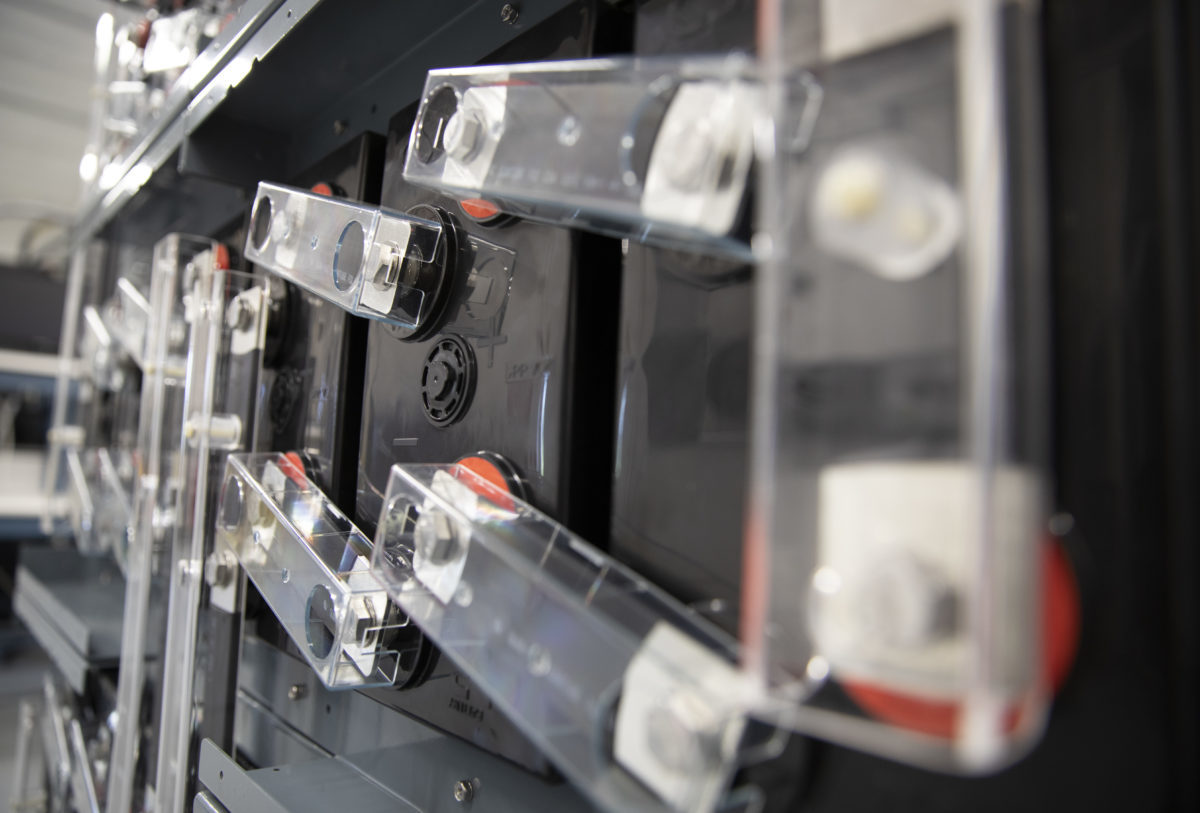From pv magazine USA
Electrochemical batteries have been around for more than 100 years and solar photovoltaic (PV) panels have been in use for half a century. During the early days of solar, users deployed PV panels to charge batteries in places far from a power line or gas station. Those batteries powered things like satellites, weather stations and remote homes. Around the turn of the century, people began connecting PV systems directly to the electrical grid.
At first, the grid connection was for purely scientific or ideological reasons, and, as regions and businesses offered incentives and PV sped down the cost curve, people used PV to save money on electricity. In 2004, PV systems installed without batteries outnumbered battery-based systems for the first time – by 2010, solar-plus-storage systems were relegated to a small niche of the booming solar industry. But now the industry is coming full circle.
In October of 2015, Hawaii’s public utilities commission became the first in the U.S. to start limiting grid-direct PV installations due to impacts on local grids from midday power exports. New systems would not be allowed to send surplus power back to the grid indiscriminately. Thanks to a small but thriving number of businesses that still installed off-grid and backup systems, many Hawaiian solar customers deployed batteries to ensure their PV output was stored for nighttime use rather than pushed back to the grid. The writing was on the wall: PV and batteries were not as separable as we thought.
Since then, utility rates in several more states have been made more sophisticated, in part to discourage the export of solar PV power onto the grid at inopportune times. The industry is responding by making batteries available to most new solar customers. While the added cost of the batteries can make the financial payback of these PV systems less lucrative than the direct grid models, batteries provide additional resilience and control for the system owner – which is increasingly important to consumers and businesses alike. All of the industry signs are clear: storage is going to be part of most solar PV systems going forward.
Batteries to sell
While long-standing off-grid and PV backup suppliers have quietly supported solar-plus-storage applications all along, the nation’s largest solar PV installers like Sunrun, SunPower and Tesla started offering battery products to their customers in the last several years. The companies continue to report dramatic growth in the share of battery sales to their traditional PV-only offerings. The advent of well-packaged, long-life lithium-ion batteries has made energy storage more appealing to consumers.
When the biggest names in solar get behind batteries, their marketing, messaging and political influence increases awareness among consumers, businesses, and governments alike. Their smaller competitors also take up the cause so that they don’t get left behind.
Utilities and policymakers
Ever since utilities in California published the infamous “Duck Curve” showing the growing impact of high solar PV penetration on the grid, batteries have stood out as a potential solution. But it wasn’t until some industry pundits analyzed a proposed gas peaker plant in Oxnard, California compared to an energy storage-based solution that utilities and regulators realized batteries were cost-effective at the scale needed to offset the intermittency of renewable generation sources. Today, many state and local governments incentivize energy storage on both sides of the meter with programs like California’s self generation incentive program (SGIP) and New York’s bulk storage incentives.
Incentives like these have direct and indirect impacts on demand. Much like government incentives for energy technologies going back to the industrial revolution, they signal that businesses and consumers should embrace the technology – and they usually work.
Standardized safety
One of the surest signs batteries in homes and businesses are now mainstream is their inclusion in the latest codes and standards. Building and electrical codes published in 2017 and 2018 acknowledged batteries, but rarely went beyond insisting compliance with the then-new UL 9540 safety testing standard.
The definitive battery safety standard, National Fire Protection Association (NFPA) 855, was published in late 2019 after a productive engagement between industry representatives and the NFPA – a principal developer of national safety codes. The next round of codes, starting with the 2020 National Electrical Code, has been or will be harmonized with NFPA 855 to provide the same level of guidance to inspectors and building officials that they have for things like HVAC, water heaters and windows.
In addition to ensuring safe installations, these standardized requirements help building officials and inspectors consistently enforce safety requirements – which makes them more comfortable dealing with batteries and related equipment. As inspectors and officials develop routines for permitting and approving battery installations, the risk and time associated with those critical steps decrease, leading to shorter project timelines, lower cost and better customer experience. Like the previous indicators, it is a positive reinforcing cycle that continues to drive growth in the rapidly maturing solar-plus-storage segment.
Next step
As more batteries join the electric grid, many exciting applications are possible. Several virtual power plant (VPP) type programs were recently established on both coasts, which enable homes and businesses to leverage their profitable battery systems to offer essential services that keep the grid stable.
Utilities continue to push the envelope with increasingly sophisticated rate structures that more accurately reflect their costs and environmental impacts of delivering power in real-time. Customers increasingly need energy storage to keep electric bills under control. And as climate change leads to more extreme weather and related outages, backup and resilience only grows in value and importance. The cycle continues to accelerate and reinforce itself along the way.
Author: Paul Dailey
***
Paul Dailey is director of product and market strategy at OutBack Power Technologies, an EnerSys Company. The views and opinions expressed in this article are the author’s own, and do not necessarily reflect those held by pv magazine.
The views and opinions expressed in this article are the author’s own, and do not necessarily reflect those held by pv magazine.
This content is protected by copyright and may not be reused. If you want to cooperate with us and would like to reuse some of our content, please contact: editors@pv-magazine.com.








By submitting this form you agree to pv magazine using your data for the purposes of publishing your comment.
Your personal data will only be disclosed or otherwise transmitted to third parties for the purposes of spam filtering or if this is necessary for technical maintenance of the website. Any other transfer to third parties will not take place unless this is justified on the basis of applicable data protection regulations or if pv magazine is legally obliged to do so.
You may revoke this consent at any time with effect for the future, in which case your personal data will be deleted immediately. Otherwise, your data will be deleted if pv magazine has processed your request or the purpose of data storage is fulfilled.
Further information on data privacy can be found in our Data Protection Policy.